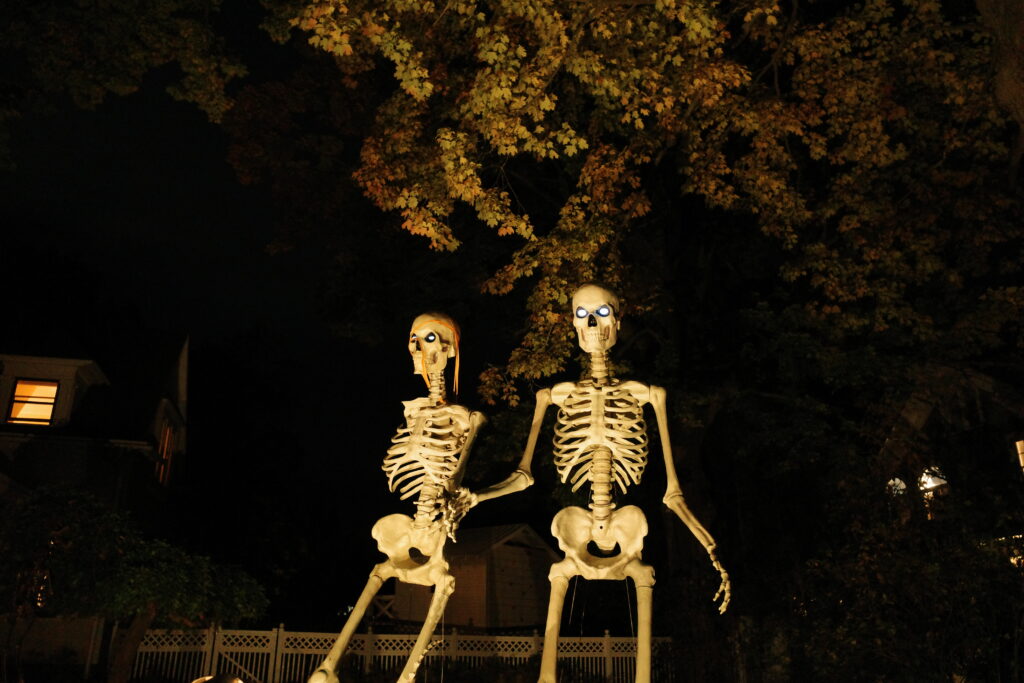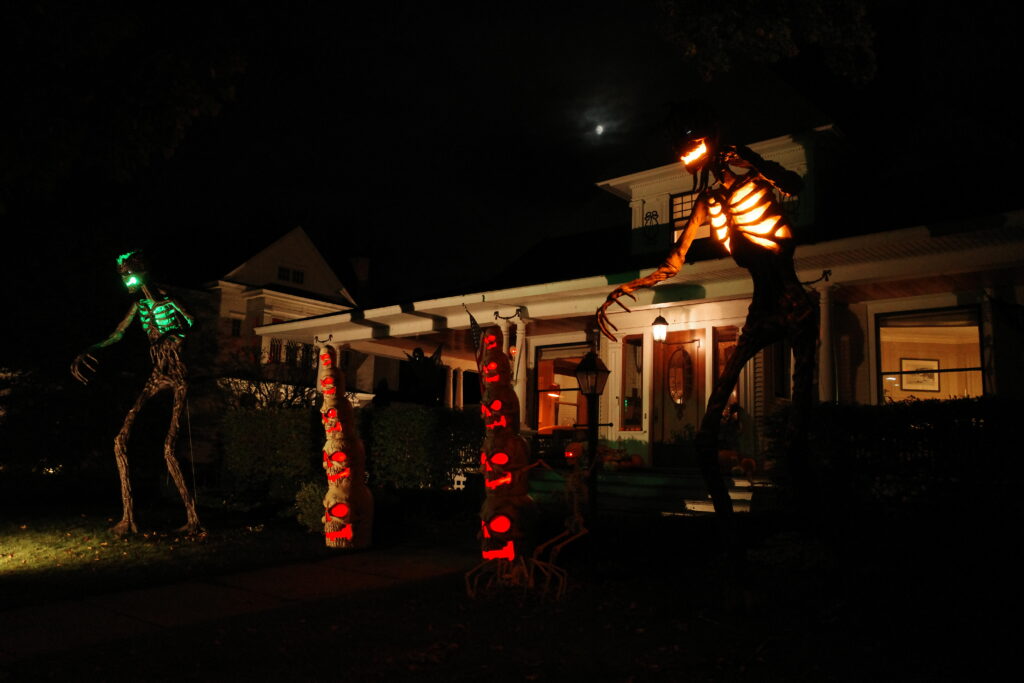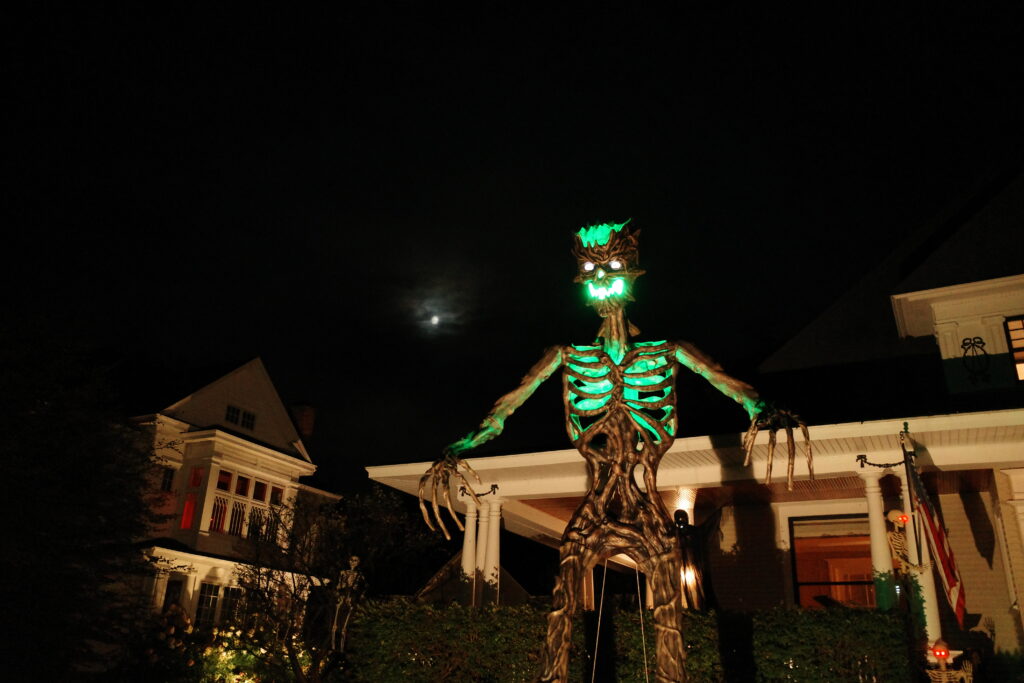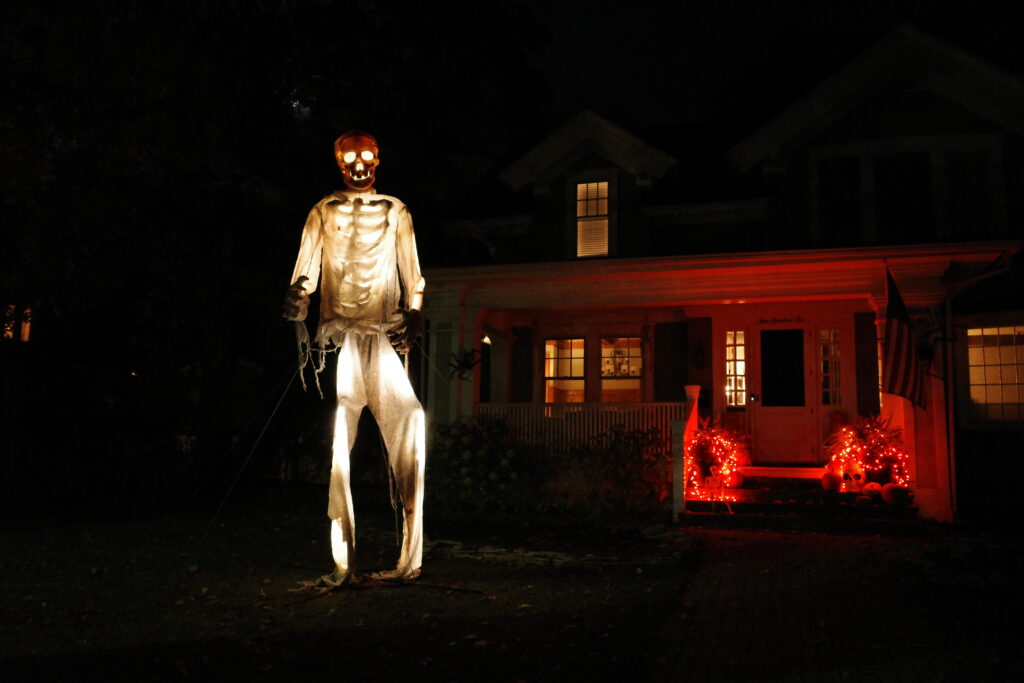It’s October, and I’m taking a walk with my kids. We stroll along merrily, when suddenly, we come face-to-face with a giant demonic clown that looms over a doorway.
“What’s that?” my 4-year-old wants to know.
What can I say? How about, “It’s a possessed clown, probably modeled after Pennywise, an evil shapeshifting villain who preys on children. These homeowners are just being festive! Kids actually love decorations like this!”
Here, I imagine Stephen King fans might retort, “Actually, a child-killing clown isn’t so very different from a Halloween witch or a vampire, because they also prey upon kids.”
But they’re different. And anyone with a brain knows it.

The fight for Halloween—the old Halloween—has been on for a few decades now. When exactly it went from pleasant and slightly spooky to totally disgusting and sinister, I can’t say. Some say it happened in the 1960s and ’70s when zombie and slasher films became popular.
Maybe, maybe not. Litigating the point doesn’t matter. The crux is that public depictions of evil incarnate, by way of psychotic characters and grotesque displays of homicide and mutilation, are a recent development. It’s changing Halloween and our sensibilities in general.
I take frequent walks around our neighborhood with my kids. We like to go different ways each time. But every fall, I limit us to certain streets, certain blocks. I don’t go places where I know there’ll be frightening Halloween decorations.
We don’t do super scary costumes or movies either. We avoid certain stores where the gross stuff is for sale. In fact, I censor a great deal of what my children see, read, and watch—all year long.
A lot of people would criticize me for this. Don’t shelter your kids too much or they’ll turn out weird, some argue. But I don’t believe in that.
In another time, sure, I wouldn’t have to dodge the vulgarity that bubbles up this time of year. I wouldn’t have to, because 75 years ago, no one would have put a psychotic butcher with a deli case full of dead body parts on their lawn.
One might argue that people have been fascinated by the creepy and macabre for millennia. And they’d be right. Aeschylus’s “Oresteia,” an ancient Greek trilogy of plays, features multiple murders and a ghost. There are the three witches in Shakespeare’s “Macbeth” and Banquo’s ghost. Bram Stoker’s “Dracula” is one of my personal favorites. George Orwell even wrote an essay about the 20th century Englishman’s fascination with real-life murder stories. And of course, Halloween itself obviously has a long past infused with spirits, hauntings, and the thin veil between life and death.

But everyone, up until three minutes ago, knew the difference between tasteful fright and gratuitous gore. Especially when kids were involved.
The sick stuff is new.
People squabble over the reasons why this descent is happening. Certainly, momentum away from religion and wholesomeness. Plummeting fertility rates and fewer children also has something to do with it.
But the 20th century is also responsible for promoting the aimless impulse to outrage, disturb, and shock. Fake dead bodies, heads pierced through iron stakes, cauldrons of bloody limbs on your front lawn—that’ll do it.
It really only works for a moment, though—before it gets worse. As Roger Scruton said, “What is shocking first time round is boring and vacuous when repeated.” And so we descend.
Everywhere you look, beauty has become more scarce, while ugliness and a strange obsession with evil seem to be ramping up. Movies, TV, commercials, billboards, bumper stickers, T-shirts. Even architecture. Beyond nature, where can you see beauty in your Michigan town?
Maybe it’s the house with the dismembered naked baby dolls hanging from trees, Duck Tape over their mouths, hands bound at the wrists. This was on display a few years ago in Plymouth. When a local news station interviewed neighbors, they shrugged. “It’s her house,” one woman said. “She can put up anything in her yard she wants to.”
Of course, most of us are too polite to say anything. We fear the worst—that we could insult someone. After all, more threatening than a demented axe-murderer is the thought of judging someone else’s taste. Everything’s subjective, right?

Wrong.
When I was a film student, on my very first day of my very first class, the very first thing our professor told us was that in every film, assume all the little things you see were put there on purpose. The poster on the teenager’s bedroom wall. The items in another character’s fridge. The scarf she wears. The car he drives. Everything means something.
It’s the same with life. Your environment means something to your life. What you see when you wake up, look out your window, or take a walk is important. And this is amplified tenfold with children. If we’re not careful with what we expose them to, they’ll be pickled in whatever the worst of society chooses to let loose. And you will be too.
So what can you do?
To my mind, the one and only answer is to control whatever you can. You cannot control everything. But you can control your own environment.
Halloween still has plenty to love about it. If you want to enjoy the holiday, do it your way. “Be the change you wish to see in the world” isn’t just a dorm room poster. It’s a great and powerful suggestion.
Faye Root is a writer and a homeschooling mother based in Northern Michigan. Follow her on X @littlebayschool.



